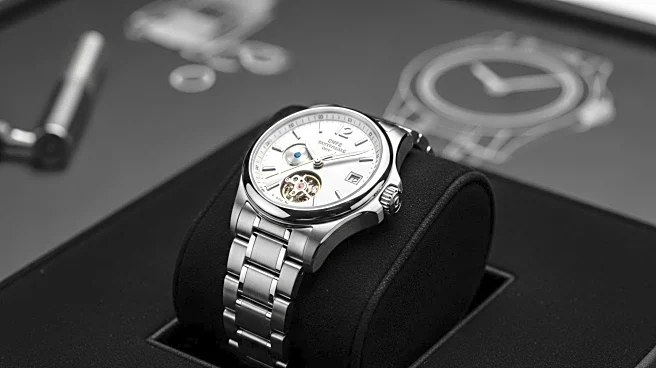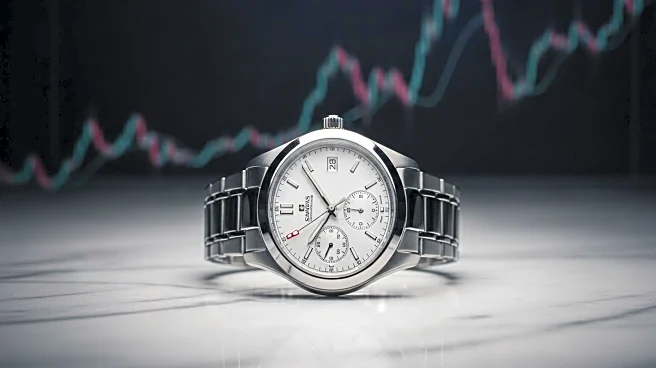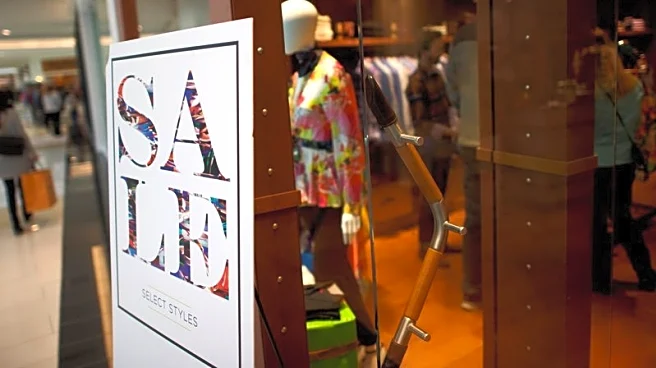What's Happening?
The Swiss watch industry, including brands like Rolex, Patek Philippe, and Audemars Piguet, has shown resilience amidst economic uncertainty, with record sales indicating strong U.S. consumer confidence. From 2021 to 2024, Rolex's revenue in the U.S. surged by 31.4%, reaching CHF 10.58 billion, driven by strategic pricing and exclusivity. Despite inflation and geopolitical tensions, secondary market prices for Rolex watches remained stable, highlighting their status as both luxury items and investment assets. The pre-owned watch market has also gained popularity, with global consumer interest doubling since 2020, suggesting that consumers view these timepieces as enduring assets.
Why It's Important?
The performance of Swiss watchmakers serves as a barometer for U.S. consumer confidence, offering insights into economic health. Despite a volatile macroeconomic environment, U.S. consumers continue to prioritize luxury watches, reflecting a blend of cultural capital and financial pragmatism. The U.S. Consumer Confidence Index (CCI) has fluctuated, with a peak in January 2024 and a dip by August 2025, indicating concerns over inflation and job market softness. However, Swiss watch exports to the U.S. rose by 6.9% year-over-year in July 2025, suggesting that these brands anticipate shifts in consumer sentiment and maintain demand amid uncertainty.
What's Next?
The looming threat of U.S. tariffs on Swiss watches could impact the industry, potentially forcing brands to absorb costs or pass them to consumers. However, Swiss watchmakers have responded by reducing production to emphasize exclusivity, maintaining demand through scarcity and brand loyalty. As the Federal Reserve considers rate cuts and global trade tensions persist, the Swiss watch industry's adaptability will be closely monitored, providing early signals of shifting consumer sentiment.
Beyond the Headlines
The Swiss watch industry's resilience highlights broader trends in the luxury sector, where sustainability and investment value are increasingly prioritized. The growth of the pre-owned market, driven by a younger demographic, suggests a shift in consumer perception, viewing luxury watches as tangible assets with liquidity. This evolution mirrors changes in luxury consumption, where cultural capital and financial pragmatism intersect.












